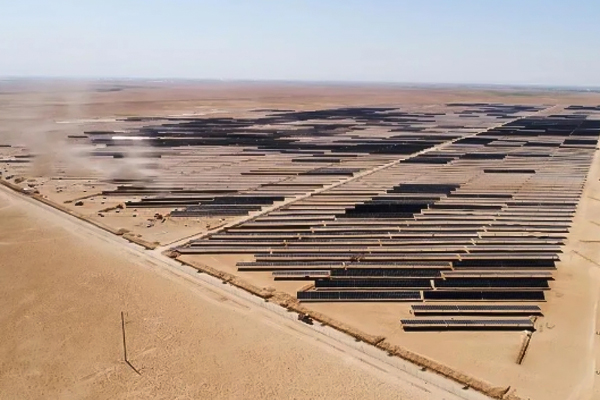VIDEO & CENTER

By 2026, Uzbekistan plans to have 5,000MW of photovoltaic and wind power generation capacity, and this figure is expected to exceed 18,000MW by 2030. This will allow the country to produce 50 billion KWH of electricity per year, save 15 billion cubic meters of natural gas and reduce emissions of 21 million tons of harmful gases per year. These efforts will enable Uzbekistan to generate 40 percent of its electricity from renewable sources by 2030.

Uzbekistan has signed 38 agreements with international companies for the construction of solar photovoltaic and wind power plants with a total capacity of 20,630MW. These include a solar photovoltaic power plant with a capacity of 7,630MW and a wind farm with a capacity of 13,000MW. In support of these initiatives, the President of Uzbekistan signed 29 decrees to facilitate the implementation of these projects.
Currently, several large-scale renewable energy projects are being implemented, including seven solar photovoltaic plants with a total capacity of 1,700MW and three wind farms with a total capacity of 900MW. Leading international investors such as ACWAPower of Saudi Arabia, Masdar of the United Arab Emirates and Voltalia of France, as well as Chinese companies such as Gezhouba Overseas Investment Group and China Datang Overseas Investment, are ramping up local investments. These projects are expected to generate around $24.37 billion in investment, all funded by foreign direct investment.
So far, Uzbekistan has successfully put into operation nine solar power plants and one wind power plant, producing a total of 2.7GW of "green" electricity. These power plants are located in 7 regions and contribute greatly to the energy mix of the country.
Key milestones in this green energy transition include:
August 2021: Uzbekistan's first large-scale solar photovoltaic power plant is launched in Karmana, Navoi region, with an installed capacity of 100MW.
May 2022: The second solar power plant with a capacity of 100MW starts operation in Nurabad, Samarkand region.
December 2023: Solar power plants in Jizak Garaorol (220MW), Bukhara Karaural Bazar (200MW) and Surkandariya Sherabad (457MW) are put into operation.
May 2024: Construction of additional power plants in Nishan, Kashkadariya (100MW and 200MW) and Yukorich Kirchik in Tashkent (200MW).
As of November 6, 2024, Uzbekistan's solar and wind power plants had generated 4.19 billion KWH, of which 3.65 billion KWH were generated by solar plants and 543.7 million KWH by wind farms. This output helped save 1.27 billion cubic meters of natural gas and prevented the release of 1.76 million tons of harmful gases into the atmosphere. To put this in perspective, the electricity produced to date could meet the annual electricity consumption of nearly 1.75 million households.
Looking to the future, Uzbekistan has made ambitious plans to continue developing renewable energy sources. By the end of 2024, 10 more solar and wind power plants are planned, with a total capacity of 2,600MW. In 2025, seven more power plants will be commissioned with a capacity of 3,150MW. By 2030, the country plans to operate nine wind farms in the Republic of Karakalpakstan with a total generating capacity of 9,300MW.
In another move, Uzbekistan launched a program in 2021 to buy electricity generated by solar panels installed in homes. As of September 2024, the government has paid more than Sh2.4 billion ($186,646) to 6,379 citizens for the sale of 2.4 million KWH of electricity to the grid. Between January and September this year, 6,397 people sold a total of 8.94 million KWH of surplus electricity at a price of 1,000 shillings ($0.08) per KWH. These payments are processed monthly through the National Tax Board's "Soliq" mobile app.
To further encourage people to use solar energy, the government has created an online platform where citizens can buy solar panels and solar water heaters. These products are available through a 3-year interest-free installment plan or a one-time purchase, with compensation per unit of capacity.














